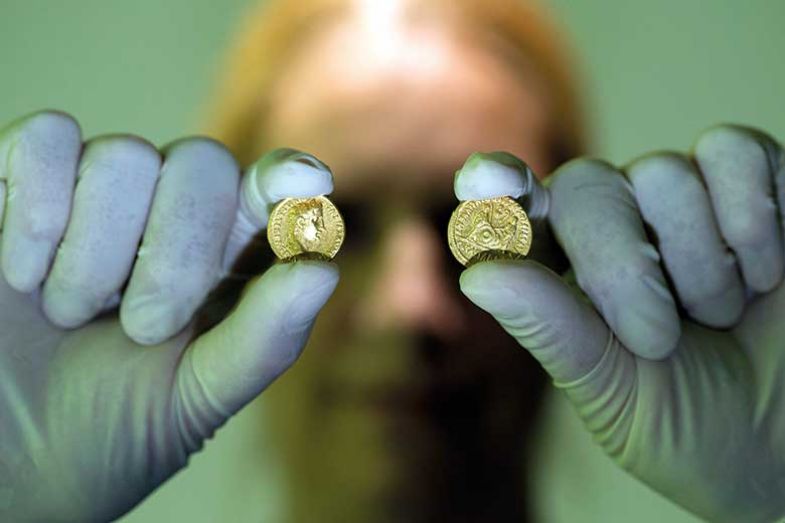For Graham Steel, the need to access scientific research was personal. After his brother, Richard, died at the age of 33 from variant Creutzfeldt-Jakob disease, a rare and fatal neurodegenerative condition, he started to read relevant medical papers to learn more. Working as an insurance claims handler at the time, Steel had no connection to the academic world, but began to share scientific findings, copyright permitting, with other family members of vCJD patients through the website of a charity he had become involved in.
“Simply by placing information online in an open manner…traffic increased by 4,000 per cent,” he tells Times Higher Education 17 years on. “As such, even before I knew what open access was, it was abundantly clear that being open was the main key to outreach.”
Now a publishing consultant and adviser to non-profit research network Open Knowledge International, Steel has repeated his story time and time again for the benefit of those who still need convincing of the need for open access. But recent developments suggest that he is going to have to tell it many more times still.
The progress that open access has made since the movement began two decades ago is impressive. The number of open access journals listed in the Directory of Open Access Journals rose from 4,800 in 2009 to 9,500 in 2017, for instance, while about 30 per cent of all published academic work is currently available for free through open access platforms. But, despite the adoption of open access mandates by numerous research funders around the world in recent years, advocates remain frustrated by the pace of change, while university libraries chafe against the ongoing cost of subscriptions, on top of open access fees, epitomised by the recent cancellation of Elsevier contracts by research institutions in Germany and Sweden, as well as, potentially, California.
Hence, many open access advocates cheered last September when a group of European funders, under the auspices of the European Commission, unveiled their “Plan S”. Unlike previous funder mandates, which typically permitted embargo periods before papers had to be made freely available, the plan requires research to be made freely available immediately on publication, from 2020. Plan S – the S could stand for science, speed, solution or shock, according to the plan’s chief advocate, Robert-Jan Smits, the commission’s special envoy for open access – quickly gained momentum and its original 11 signatories, which included UK Research and Innovation, were quickly joined by a host of other major funders, including from the US, with unexpected support even being offered by Chinese agencies.
“The response has been amazing,” Smits tells THE. Yet, he admits, “there are still some challenges ahead. We need to go global and overcome the barriers held up by stubborn, vested interests, ranging from commercial publishers to individuals and institutions that are fearful of change and feel comfortable in a system driven by the journal impact factor as a single metric for assessing output and quality.”
Some of the fiercest pushback to Plan S, whose consultation phase ends on 8 February, has come from scholars themselves. An open letter signed by more than 1,500 people argues that the plan’s effective ban on publishing in a host of high-profile journals that don’t offer an immediate open access option is discriminatory against younger researchers trying to make their names. More generally, the letter adds, imposing such a draconian mandate on scholars conflicts with the principle of academic freedom. Some prospective PhD students told THE that they would move to a non-Plan S country to avoid the restrictions.
Learned societies, many of which rely on income from their journal publishing arms, also cried foul, warning that some could disappear as a result of Plan S’ short implementation period and proposed cap on article processing charges. Open access advocates responded that it was hypocrisy for organisations dedicated to the dissemination of scholarly knowledge to object to a plan that promises to turbocharge that process. But the pushback reveals that, for many, the centrality of open access to the dissemination of knowledge – or, perhaps, the primary importance of dissemination above all other scholarly concerns – is yet to be widely accepted.

The intuitive case for open access is easily made. Since most research is either publicly or charitably funded, it should be freely available to taxpayers and donors. This will improve the global public’s knowledge on a vast array of topics. It will allow scholars in the developing world to take a fuller part in the global scholarly conversation, and will allow policymakers around the world to devise more effective, evidence-based solutions to social problems. Governments are also attracted by the idea that easier access to scientific findings for small and medium-sized enterprises will boost innovation and economic growth.
Marcus Munafo, professor of biological psychology at the University of Bristol, argues that open access can make life easier for academics, too: “As a Cambridge professor once told me, your most important collaborator is yourself from six months ago,” he says. “Open access makes that step so much easier by way of archiving what you as well as everyone you work with has done. If I publish all of my work on preprint repositories, I know they are there in one place, I can access them wherever and whenever I want.”
Speaking at a Royal Society event in November, Munafo also argued that the greater exposure potentially afforded by open access should promote more rigorous science: “The mere fact you are sharing data means you will check it more times than you would have before,” he said. However, he added that whether this really happens in practice is “tricky to determine”.
Indeed, the debate about the merits of open access suffers from a general dearth of hard data on the issue. There have been a number of studies on the advantages of open access in terms of citation count; one 2016 study by the US researcher Jim Ottaviani found that open access publications receive a citation advantage of up to 19 per cent compared with papers in subscription journals. And a white paper published in 2017 by Springer Nature revealed that its open access books enjoy seven times more chapter downloads in their first year of publication than regular Springer books do. However, one of the few things open access advocates and sceptics seem to agree on is that it is difficult to measure the overall impact that open information has on society beyond academia.
Take the commercialisation argument. UKRI’s support of Plan S is informed by the centrality of scientific research to the UK’s post-Brexit industrial strategy, and to the sense that open access will promote greater collaboration between academia, industry and investors. That line of thought informed the push by former universities and science minister David Willetts to promote greater open access – and the use of copyright licences that permit commercial reuse. However, David Mullen, then Elsevier’s regional sales director of corporate markets in Europe, the Middle East and Asia, claimed in 2014 that small companies lacked the time to wade through journals and needed help to find the “nugget” of information they needed. He said a pilot project Elsevier had carried out in the Netherlands several years previously, in which it opened its entire journal content to about a dozen small technology companies, had made little impact.
Phil Weir, director of Flax&Teal, a UK data company, argues that the commercialisation argument for open access is “logical”, and agrees that open access helps companies such as his own, which supplies tools back to academics. “Open access provides an opportunity to refocus [projects] from individual consortia that benefit few players, to sector-wide collaboration that opens a door for anyone,” he says. “Historically, how many SMEs and independent coders would have an impact on academics’ daily work, from medicine to linguistics?”
However, he admits that it is “hard to state conclusively” whether there is a direct link between open access and national economic output overall – particularly given that open access has not yet attained a “critical mass” and thereby become widely “visible” to companies.
“I’m not sure it will massively change how large enterprise acts,” he says, since “many companies will either take the financial hit [of buying a subscription to many journals] or accept they’ll miss out on much of the literature by picking a single service – or they’ll find a less official way to get [hold of] research. I would imagine the last is true in many spin-offs, where a handy article folder may already exist. As such, rather than developing a core initial concept, open access probably has more of an impact on exploring new business areas, or surveying the literature, or staying at the cutting edge,” he says.

UK policy on open access has been driven by reports drawn up by sector figures, such as 2012’s so-called Finch report, commissioned by Willetts and colloquially named after former vice-chancellor of Keele University Dame Janet Finch, who chaired its working group, and 2016’s “Open Access to Research Publications” by Adam Tickell, who is now vice-chancellor of the University of Sussex. These, in turn, refer back to earlier surveys of business people who “regard journals as important sources of information for their work”, as the Finch report puts it, and who “report that access on average is variable, with a significant minority saying that it is poor”. However, there is no word on how this affects business’ ability to innovate.
Munafo says that the UK government has been naive in following the Finch recommendation to mandate the journal-based gold open access model, which often requires academics to pay to make their papers open access, in the belief that “cost would, over time, reduce substantially...Clearly that hasn’t happened...The assumption that the invisible hand would sort everything out betrayed, at best, a lack of understanding of how academia actually works.”
Dislike of gold open access is also partly responsible for researchers’ opposition to Plan S. Lynn Kamerlin, professor of structural biology at Uppsala University, is one of the instigators of the open letter against it. While she pledges strong support for open access, she is happy with the current rate of progress and sees the recent “explosion” in the use of preprint servers as illustrative of the range of routes towards it. She fears that the details of Plan S’ “embargo requirements and repository technical requirements…are so draconian that paid-for gold becomes the easiest way to fulfil them”. This will convert the “nudges” towards gold in existing funder mandates (which she supports) into a “shove”, which will be “a disaster for the research community” because it will disadvantage those unable to pay article processing charges and “seriously jeopardise the much more rigorous quality control standards provided by high-quality society journals compared to the high-volume for-profit business model, which has an inbuilt conflict of interest”.
Nor is Kamerlin alone in expressing a concern that the allegedly lower standards of peer review practised by fully open access journals have compromised quality. But, for Peter Suber, director of the Harvard University Library Office for Scholarly Communication, debating quality rather misses the point. “Yes, there is some low-quality open access work, but there’s also low-quality subscription journal work, and people who step back [to see the bigger picture] always acknowledge that,” he says. “Quality and access are completely independent of each other. Open access isn’t a kind of peer review, it’s a kind of dissemination.”
However, he agrees with Kamerlin that the “green” form of open access, whereby academics post work that is in subscription journals on their institutional repositories or elsewhere after a certain embargo period, is another good option. Nor does he necessarily share other advocates’ aspiration for open access to reach complete saturation point.
“We don’t need to eliminate all the non-open venues: we simply need to increase the percentage of works that are open,” he says. “It’s hard to describe the finish line but it’s not 100 per cent open.”

The arguments over open access typically make no reference to specific disciplines, but some see a more urgent case for full open access in certain fields.
Kamerlin says that the “vast majority” of her work is publicly accessible, and there is “public interest in some of…my work, especially related to protein engineering to tackle societally relevant challenges. But other parts of my research portfolio are very niche, and even within the research community appeal to a quite limited audience…You need to have very specific interests to be looking out for this.” In her case, “the broadest public impact of my work has been from my policy work rather than my biochemical research”.
Open access is “more of an issue for (bio)medical research or certain aspects of the social sciences and humanities that have both more immediate societal relevance and are also more generally accessible to non-experts”, Kamerlin believes.
The case for open access in medicine is further supported by a 2015 New York Times article published in the wake of the Ebola pandemic in Liberia, Sierra Leone and Guinea. In “Yes, we were warned about Ebola”, several health researchers, including the chief medical officer of Liberia’s Ministry of Health, wrote that they were “stunned” to have recently come across a 1982 article by European scientists in the subscription journal Annals of Virology warning Liberian health practitioners to be ready to face an Ebola epidemic. This finding belied “conventional wisdom” that “the Ebola virus, which killed at least 10,000 people…was…not seen in West Africa before 2013”. Their point is that if the paper in question had been freely accessible online, it would likely have been picked up; medics could have been warned and subsequent research more accurately directed towards averting the impending crisis.
In this respect, argues Peter Murray-Rust, reader emeritus in molecular informatics at the University of Cambridge, closed access journals “are quite literally killing people”. In his view, “it is probable that we have information already in the literature which predicts the next global epidemic. There is also material on how the climate is affecting species. There are new ideas about potential antibiotics, but we are not using them because we are not able to access them.”
Murray-Rust has the key to extracting such data: he just isn’t allowed to use it. He is a pioneer of data mining: the digital process of sifting at high speed through hundreds of thousands of articles for specific information. It is a technically straightforward process that can save readers “months of their time”, but it has one major enemy: closed access journals.

On a “good day”, Murray-Rust’s software can download 100 papers a second from Europe’s PubMed Central repository of biomedical papers. “That gives you all the open access papers, but they are only somewhere between 12 and 30 per cent of the total published papers in medical science,” he explains. This leaves a huge proportion of papers unsearchable even to those with a subscription, since publishers “limit the number of downloads” that can be made from their databases, and have been known to sue those that breach those maximums.
“These search engines are not run for the benefit of the community: they are run for income generation for the organisation that runs them.” Scholarly publishing is estimated to be worth £20 billion a year, yet “it is a market where nobody has a clue” of its full potential, Murray-Rust argues. However, he is encouraged by a recent “game-changing” update to biomedical funder the Wellcome Trust’s open access policy, which urges researchers to publish their papers as open access preprints as soon as they are ready, in order to speed up the process of disseminating information that could be relevant to addressing major health crises in the developing world.
On the benefits of open access to the developing world, Rafael Mitchell, a research associate at Cambridge’s Faculty of Education, who works on a project cataloguing research by scholars in sub-Saharan Africa, confirms that many are unable even to access their own work because of paywalls. “Many institutions in the region have poor internet access,” he says. “In some, lecturers pay for their own internet via mobile networks that charge by the megabyte. In these contexts, anything that stands in the way of researchers quickly and freely accessing the research is a serious challenge.”
Publishers do make efforts to offer free or reduced-rate access for institutions in the developing world, but there is little knowledge of such schemes, Mitchell says. “Even some of the top Pan-African organisations have no institutional access to paywalled research – which, incidentally, is also the case for many international NGOs,” he says.
Nilam McGrath, a knowledge translation consultant, adds that in her experience of working with research institutions in the global South, “securing [fee] waivers is never easy and always involves some degree of negotiation and proof of how ‘poor’ we are. Sure, publishers might think that they make it easy, but the protracted and bureaucratic process is maddening. I don’t think funders are always aware of the hoops we have to jump through to implement their policies.”
Moreover, Murray-Rust is “on the board of one or two journals who have said that we do not make reductions for the global South. So you end up with the global South being able either to read the literature but not to publish [under gold open access], or to publish but not to read [under the subscription model].”
Responding to such concerns, the Plan S coalition announced in December that it will ensure that researchers from low- and middle-income countries are not priced out of publishing and academic collaborations by article processing charges.
McGrath also advises researchers on how to share their research with different audiences – a key but often overlooked sector of which is the general public. One of the arguments made by open access sceptics is that members of the public simply don’t want access to academic research – or that if they were granted it, the vast majority wouldn’t understand it. Better, the argument goes, to push more academics to produce trade books, which make research in their fields palatable to a general audience.
While McGrath herself is an open access advocate, she knows first-hand that non-academics need more than just free access to an article in order to utilise it. “I get a lot of questions asking things like: ‘I’ve downloaded this article – it’s 8,000 words. Where do I begin?’,” she admits. “Looking at all the data takes time [and] training. Access is one thing: interpreting it is another.”
But Steel points out that “there is already a vast amount of material on medical topics available on the internet, much of which is junk. Can it really be beneficial for society that patients should have access to all the dubious medical information on the web but should be denied access to the scientifically sound, peer reviewed research papers?”
He concedes that, in some cases, “fully understanding a medical research study can be a demanding task, requiring additional background reading. But patients suffering from diseases are understandably motivated to put in the effort to learn more about their conditions, as the success of patient advocacy groups in the US, for example, has shown. Patients absolutely should have the right to see the results of the medical research that their taxes have paid for.”
Again, this public demand for access to papers is difficult to prove through the available citation or download figures. But, according to Suber, while it is true that most of the readership of open access papers is within universities, it also includes others. For instance, when the US National Library of Medicine made its content open access on the US version of PubMed Central, use of the database increased “100-fold, with around 40 per cent of the visitors coming from non .edu email addresses”.
And Suber can personally provide “a couple of thousand” stories about the use of Harvard’s open access database, known as Digital Access to Scholarship at Harvard, or DASH, by members of the public. These are elicited by automated invitations when people download content, and the university receives “five stories a day”, Suber says. “It is a ‘wow’ experience because some of them are from academics from institutions that can’t afford subscriptions, but some are students, priests, non-profit people, journalists.”
The wrangling between funders, universities, academics and publishers over the price and urgency of open access will doubtless go on for several years yet. Regarding Plan S specifically, Kamerlin also cites a slippery slope argument against it. “What will funders demand next?” she asks. “Will they set restrictions on who I can collaborate with? What countries I am allowed to take students from? People are happy with Plan S because they like the outcomes, but they do not realise that they are setting a very dangerous precedent, in terms of what funders think they can demand and mandate next…I am all for a transition to openness, but it needs to be community driven, not funder driven.”
Suber’s view is that the academy “should continue to grow the percentage of new work that’s open from birth, and then see what the consequences are. If it turns out that it harms subscription publishers roughly the way computers harmed typewriter manufacturers, then that’s the way it shakes out. But if it turns out those publishers can adapt to open access – great.”
One testimony on the Harvard repository’s website is from a “gender-fluid” person in Iran, who wants to read about transgenderism. “I found the article informative and illuminating,” that person says. “It was very heart-warming to know that academia is not oblivious to our plight.” Then there are “people who want to read about politically sensitive chapters in [their] country’s history but can’t because it’s censored”, Suber says. “In this respect, open access is quite literally life-changing for people.”
POSTSCRIPT:
Print headline: Access all areas
Register to continue
Why register?
- Registration is free and only takes a moment
- Once registered, you can read 3 articles a month
- Sign up for our newsletter
Subscribe
Or subscribe for unlimited access to:
- Unlimited access to news, views, insights & reviews
- Digital editions
- Digital access to THE’s university and college rankings analysis
Already registered or a current subscriber?









